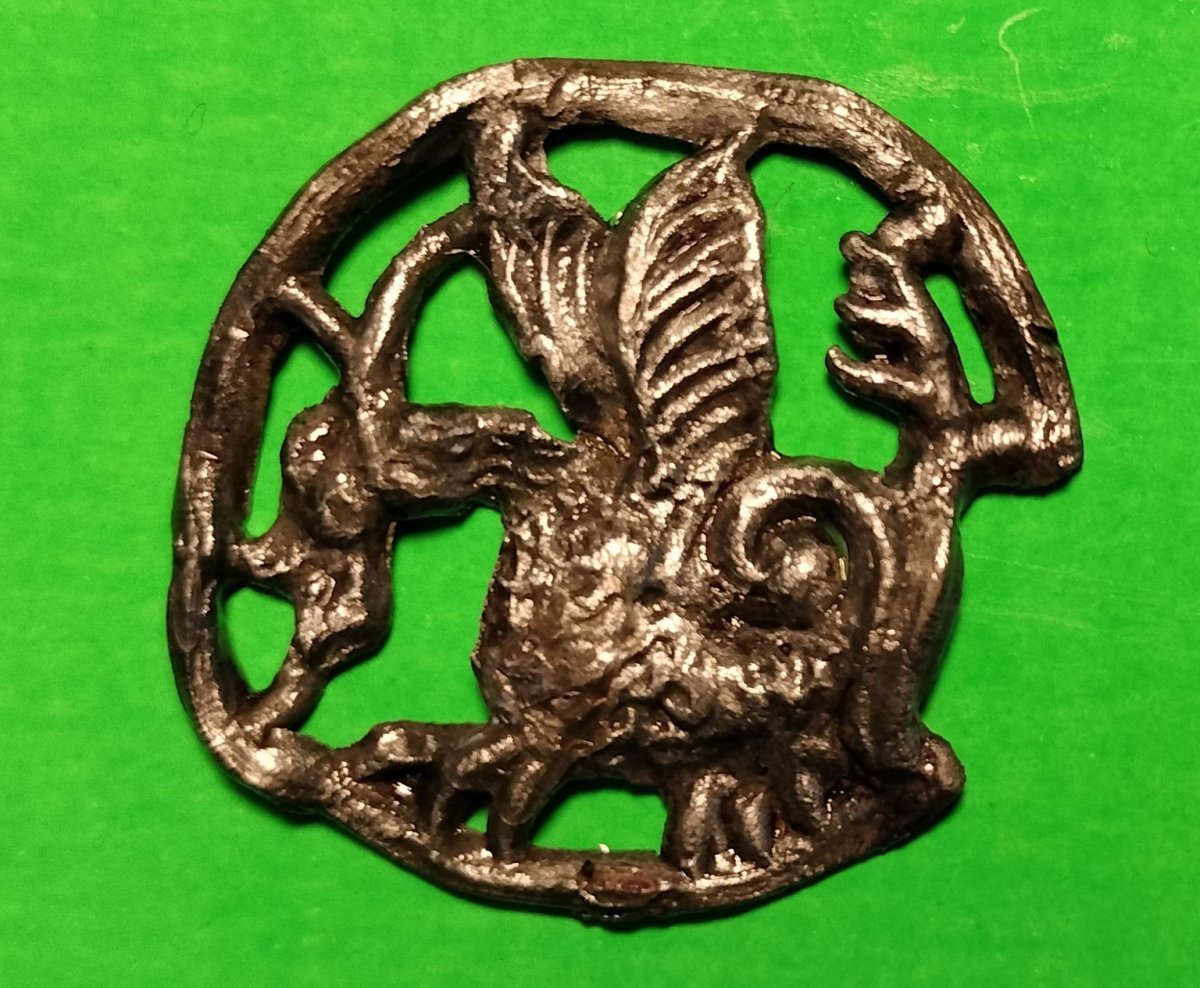A metal artifact thought to be a "medieval pilgrim's badge" has been uncovered in Poland.
The small, round object, which was cast from a lead and tin alloy, measures just over 1 inch across and is less than one-tenth of an inch thick, the provincial conservator of monuments for the city of Lublin in the east of the country announced in a Facebook post.
The "badge" features a depiction of what appears to be a dragon or basilisk, a legendary serpentlike creature in European folklore that was said to have a deadly stare, according to the conservator.
In medieval Europe, some Christian pilgrims wore badges as a kind of talisman—an object thought to possess magic powers and bring good luck. These objects were believed to protect the wearer from all kinds of "evil"—including assault, theft, diseases and random accidents. They also served to distinguish the wearers as pilgrims, the post said.

These pilgrims' badges came in various forms and shapes—including spirals, squares, crosses, shells, rings and shields.
They typically featured the figures of saints, knights or human heads or depicted creatures, including birds and dragons.
Some of the oldest examples of these badges date back to the 11th century. Their use spread in the subsequent centuries, and they remained "very popular" until around the 16th century, the post said.
In a statement to Newsweek, Tomasz Murzyński, an independent archaeologist in Wrocław, said he received the artifact with the basilisk depiction from an anonymous metal detectorist who found it in Wólka Nieliska—which lies in the region of Lublin.
"I handed over this artifact to WKZ in Lublin," Murzyński said, referring to the city's Provincial Office for the Protection of Monuments. He added, "Now it is state property."
The artifact represents a medieval pilgrim's badge, the conservator said. But there may be other interpretations. For example, it has also been suggested that the object may be some form of button with a picture or a "hero's medal," potentially from a later period, the Polish archaeology magazine Archeologia Żywa reported.
The magazine also said the creature depicted in the middle of the artifact resembles Zilant, a mythological dragon-like monster that is the symbol of the southwestern Russian city of Kazan.
Do you have a tip on a science story that Newsweek should be covering? Do you have a question about archaeology? Let us know via science@newsweek.com.
Uncommon Knowledge
Newsweek is committed to challenging conventional wisdom and finding connections in the search for common ground.
Newsweek is committed to challenging conventional wisdom and finding connections in the search for common ground.
"used" - Google News
March 16, 2024 at 01:57AM
https://ift.tt/X0hLRnC
Metal Detectorist Finds 'Medieval Pilgrim's Badge' Used to Ward Off Evil - Newsweek
"used" - Google News
https://ift.tt/GLgkVz6
https://ift.tt/OUI9sCk
Bagikan Berita Ini














0 Response to "Metal Detectorist Finds 'Medieval Pilgrim's Badge' Used to Ward Off Evil - Newsweek"
Post a Comment